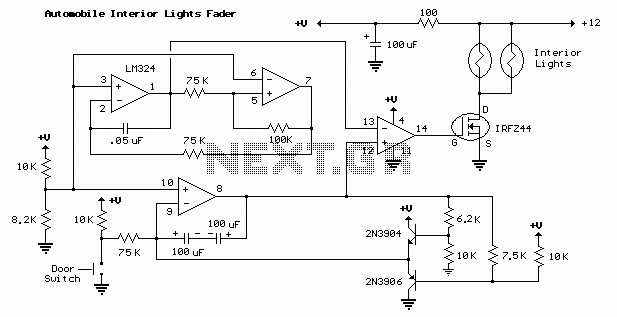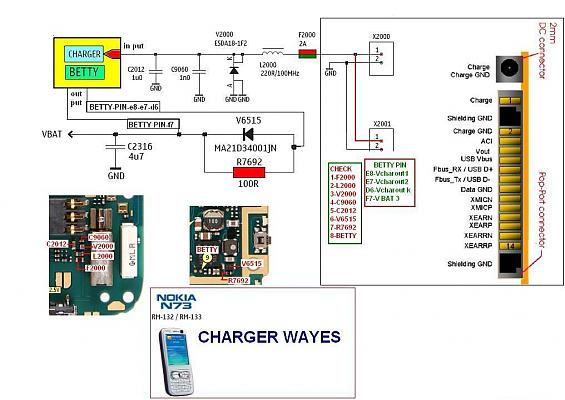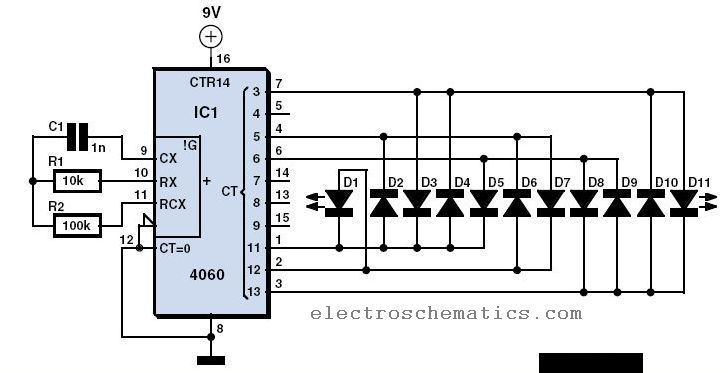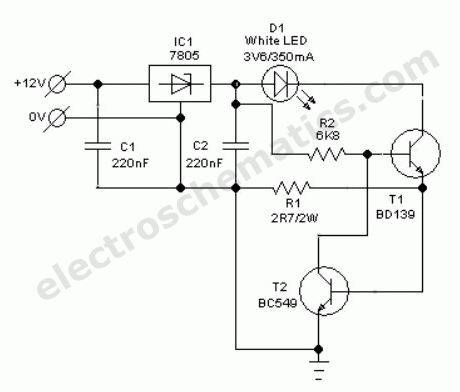
Automobile Interior Lights Fader

The automobile interior lights fader circuit diagram is designed to gradually brighten and dim the interior lights of older vehicles. This circuit utilizes the LM324 low-power operational amplifier as its core component.
The automobile interior lights fader circuit is an essential enhancement for older vehicles, providing a more modern aesthetic and functionality to the interior lighting system. The circuit operates by controlling the voltage applied to the interior lights, allowing for a smooth transition between bright and dim states.
The LM324 operational amplifier serves as the primary element, configured in a way that enables it to function as a variable resistor. This configuration allows for the gradual increase and decrease of current flowing to the lights, resulting in a fading effect.
The circuit typically includes additional components such as resistors, capacitors, and possibly a potentiometer, which can be adjusted to set the rate of fading. The resistors determine the current flow, while the capacitors are responsible for creating a time delay, thus controlling the fading speed.
To implement this circuit, it is essential to ensure proper power supply connections and to select components that can handle the voltage and current requirements of the vehicle's interior lighting. The circuit can be installed in conjunction with the vehicle's existing lighting system, allowing for seamless integration without significant modifications.
In summary, this fader circuit not only adds a sophisticated touch to the vehicle's interior lighting but also enhances user experience by providing a gradual transition in light intensity, making it a valuable upgrade for older automotive models.Automobile Interior Lights Fader Circuit diagram Circuit This circuit is similar to the fading eyes circuit above and is used to slowly brighten and fade interior lights of older cars. The circuit is based around the LM324 low p.. 🔗 External reference
The automobile interior lights fader circuit is an essential enhancement for older vehicles, providing a more modern aesthetic and functionality to the interior lighting system. The circuit operates by controlling the voltage applied to the interior lights, allowing for a smooth transition between bright and dim states.
The LM324 operational amplifier serves as the primary element, configured in a way that enables it to function as a variable resistor. This configuration allows for the gradual increase and decrease of current flowing to the lights, resulting in a fading effect.
The circuit typically includes additional components such as resistors, capacitors, and possibly a potentiometer, which can be adjusted to set the rate of fading. The resistors determine the current flow, while the capacitors are responsible for creating a time delay, thus controlling the fading speed.
To implement this circuit, it is essential to ensure proper power supply connections and to select components that can handle the voltage and current requirements of the vehicle's interior lighting. The circuit can be installed in conjunction with the vehicle's existing lighting system, allowing for seamless integration without significant modifications.
In summary, this fader circuit not only adds a sophisticated touch to the vehicle's interior lighting but also enhances user experience by providing a gradual transition in light intensity, making it a valuable upgrade for older automotive models.Automobile Interior Lights Fader Circuit diagram Circuit This circuit is similar to the fading eyes circuit above and is used to slowly brighten and fade interior lights of older cars. The circuit is based around the LM324 low p.. 🔗 External reference
Warning: include(partials/cookie-banner.php): Failed to open stream: Permission denied in /var/www/html/nextgr/view-circuit.php on line 713
Warning: include(): Failed opening 'partials/cookie-banner.php' for inclusion (include_path='.:/usr/share/php') in /var/www/html/nextgr/view-circuit.php on line 713





